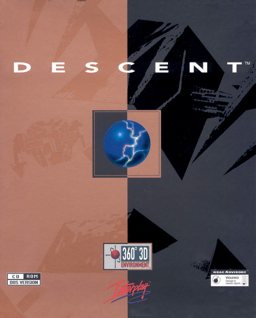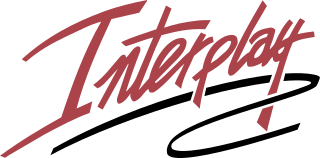Mario Kart is a series of kart racing games and a spin-off Mario franchise developed and published by Nintendo. Players compete in go-kart races while using various power-up items. It features characters and courses mostly from the Mario series as well as other gaming franchises such as The Legend of Zelda, Animal Crossing, F-Zero, Excitebike, and Splatoon.

Luigi is a fictional character featured in video games and related media released by Nintendo. Created by Japanese video game designer Shigeru Miyamoto, Luigi is portrayed as the younger fraternal twin brother and sidekick of Mario. Defined by his kind-hearted, yet cowardly demeanor, Luigi appears in many games throughout the Mario franchise, oftentimes accompanying his brother.

Mario is a character created by the Japanese video game designer Shigeru Miyamoto. He is the title character of the Mario franchise and the mascot of the Japanese video game company Nintendo. Mario is an Italian plumber who resides in the Mushroom Kingdom with his younger twin brother, Luigi. Their adventures generally center on rescuing Princess Peach from the villain Bowser while using power-ups that give them different abilities.

Waluigi is a character in the Mario franchise. He plays the role of Luigi's arch-rival and accompanies Wario in spin-offs from the main Mario series, often for the sake of causing mischief. He was created by Camelot employee Fumihide Aoki and was voiced from 2000 to 2022 by Charles Martinet, who described Waluigi as someone with a lot of self-pity. Waluigi's design is characterised by his tall stature, thin and lanky frame, and his purple and black outfit with purple hat, which displays an inverted yellow "L".

Wario is a character in Nintendo's Mario video game series that was designed as an arch-rival to Mario. Wario first appeared as the main antagonist and final boss in the 1992 Game Boy game Super Mario Land 2: 6 Golden Coins. His name is a portmanteau of the name Mario and the Japanese word warui, meaning "bad". Hiroji Kiyotake designed Wario and Charles Martinet voiced the character from 1993 to 2023, as well as other characters in the series, including Mario, Luigi, and Waluigi.

Descent is a first-person shooter (FPS) game developed by Parallax Software and released by Interplay Productions in 1995 for MS-DOS, and later for Macintosh, PlayStation, and RISC OS. It popularized a subgenre of FPS games employing six degrees of freedom and was the first FPS to feature entirely true-3D graphics. The player is cast as a mercenary hired to eliminate the threat of a mysterious extraterrestrial computer virus infecting off-world mining robots. In a series of mines throughout the Solar System, the protagonist pilots a spaceship and must locate and destroy the mine's power reactor and escape before being caught in the mine's self-destruction, defeating opposing robots along the way. Players can play online and compete in either deathmatches or cooperate to take on the robots.

Mario Is Missing! is a 1993 educational game developed and published by The Software Toolworks for MS-DOS, Nintendo Entertainment System, and Super Nintendo Entertainment System, later released on Macintosh in 1994. The player controls Luigi, who must travel around the world to find and return stolen treasures as part of a quest to find his brother, Mario, who has been captured by Bowser. Mario Is Missing!, part of a series of educational Mario games, was Luigi's second starring role in a video game, following the 1990 Game Watch game Luigi's Hammer Toss and preceding the 2001 GameCube game Luigi's Mansion.

Interplay Entertainment Corp. is an American video game developer and publisher based in Los Angeles. The company was founded in 1983 as Interplay Productions by developers Brian Fargo, Jay Patel, Troy Worrell, and Rebecca Heineman, as well as investor Chris Wells. As a developer, Interplay is best known as the creator of the Fallout series and as a publisher for the Baldur's Gate and Descent series.

Charles Andre Martinet is an American actor. Martinet developed the voices of both Mario and Luigi in the Super Mario video game series, portraying them from 1994 to 2023. He also voiced other characters in the series such as Wario, Waluigi, and the baby equivalents of Mario and Luigi, prior to stepping down as voice actor to become an official brand ambassador for the series.
Chessmaster is a chess-playing video game series, which is owned and developed by Ubisoft. It is the best-selling chess franchise, with more than five million units sold as of 2002. The same cover art image featuring Will Hare was used from Chessmaster 2000 to Chessmaster 9000.

The Software Toolworks, Inc., was an American software and video game developer based in Novato, California. The company was founded by Walt Bilofsky in 1980 out of his Sherman Oaks garage, which he converted into an office, to develop software for the Heathkit H89 microcomputer. It quickly expanded into video games, releasing Airport and MyChess in 1980; other notable games include Chessmaster 2000, Mavis Beacon Teaches Typing, and Mario Is Missing!. Toolworks merged with its distributor, Software Country, in 1986 and, after going public in 1988, acquired IntelliCreations, DS Technologies, and Mindscape. By 1994, Toolworks employed 600 people and had a revenue of US$150 million. In May that year, it was acquired by Pearson plc for $462 million, which converted it to bear the Mindscape identity by November.

Mario's Game Gallery is an American compilation of games published by Interplay Productions and developed by Presage Software, Inc. for DOS, Windows and Macintosh. It was released in 1995 in the United States. It was later re-released as Mario's FUNdamentals for Macintosh in 1996, and for Windows in January 1997, though it was published by Mindscape for the DOS and Windows versions and by Stepping Stone for the Macintosh version. It was also developed by Brainstorm Entertainment.

Mario Teaches Typing 2 is a 1997 video game from Interplay. The game was a sequel to Mario Teaches Typing, with updated and overhauled sections from the CD-ROM edition of that game, as well as fully new cut-scenes to help the game have more of a story. The game is for ages 6 and up.

There have been numerous Monopoly video games based on the core game mechanics of Parker Brothers and Hasbro's board game Monopoly. They have been developed by numerous teams and released on multiple platforms over 35+ years.

Mario is a Japanese multimedia franchise created by Japanese game designer Shigeru Miyamoto for video game company Nintendo which produces and publishes its installments. Starring the titular Italian plumber Mario, it is primarily a video game franchise, but has extended to other forms of media, including television series, comic books, a 1993 feature film, a 2023 animated film and theme park attractions. The series' first installment was 1983's Mario Bros., although Mario had made his first appearance in 1981's arcade game Donkey Kong, and had already been featured in several games of the Donkey Kong and Game & Watch series. The Mario games have been developed by a wide variety of developers including Nintendo, Hudson Soft, and AlphaDream. Mario games have been released almost exclusively for Nintendo's various video game consoles and handhelds, from the third generation onward.

The Super Mario Bros. Movie is a 2023 American animated adventure comedy film based on Nintendo's Mario video game franchise. Produced by Universal Pictures, Illumination, and Nintendo, and distributed by Universal, it was directed by Aaron Horvath and Michael Jelenic and written by Matthew Fogel. The ensemble voice cast includes Chris Pratt, Anya Taylor-Joy, Charlie Day, Jack Black, Keegan-Michael Key, Seth Rogen, and Fred Armisen. The film features an origin story for the brothers Mario and Luigi, Italian-American plumbers who are separated after being transported to a fantasy world and become entangled in a battle between the Mushroom Kingdom, led by Princess Peach, and the Koopas, led by Bowser.
















